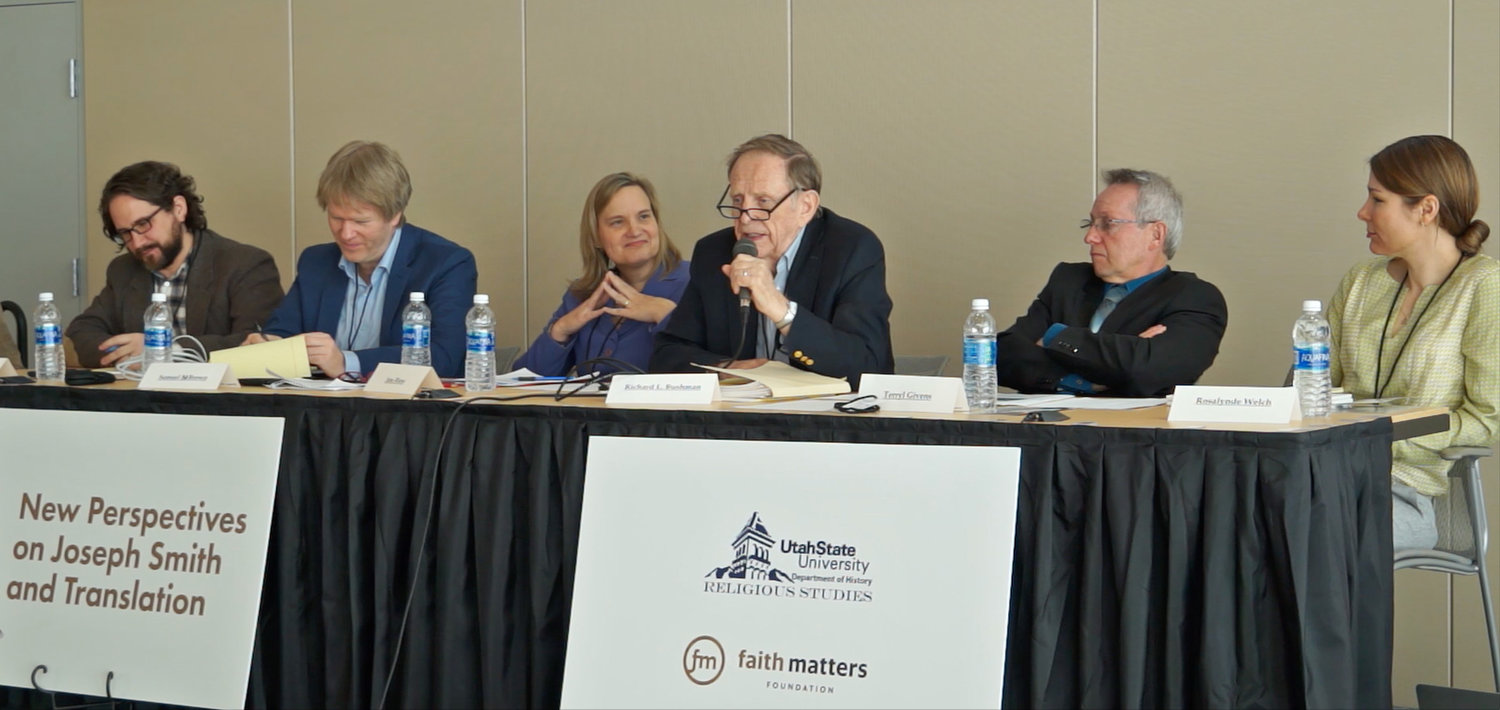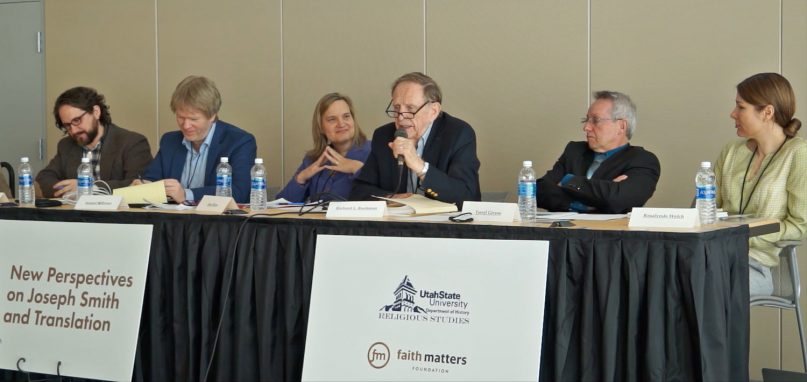
L to R: Jared Hickman, Sam Brown, Jana Riess, Richard Bushman, Terryl Givens, and Rosalynde Frandsen Welch.
In March I was privileged to be part of a conference at USU on “New Perspectives on Joseph Smith and Translation,” taking on some of the latest scholarship on Smith’s role in translating the Book of Mormon and other sacred works. (That’s me templing my fingers in the center of the photo, as if to say, “Bwahaha. Everything with this conference is going according to plan.”)
The videos from the various sessions of the conference are now being uploaded to the website of Faith Matters, the foundation that sponsored the discussion. So you can hear papers by Richard Bushman (who is speaking in the photo), Terryl Givens, Sam Brown, and Jared Hickman; there are also responses by Roslaynde Frandsen Welch and yours truly.
If you’d like to receive updates as the videos are made available, you can sign up to do that here.
One of the things I appreciated most about the conference was that everyone came at the topic from their own area of expertise–Richard as a historian; Terryl, Rosalynde, and Jared as literature scholars; Sam from his POV as an ICU physician who deals daily with life and death. (He connects that to the translation of the Book of Mormon. I can’t do the argument justice; you just have to hear it for yourself.)
At the end of the day, no one had come up with a Grand Unified Theory about how Joseph Smith translated, but we had raised some important issues that show the inadequacies of the old model (Smith translating from one language to another without any of his own input, or what Skousen called the “tight control” model). Lots of interesting questions arose:
- What would a “loose control” model look like? How much of Joseph is in this text?
- What is the significance of the BOM’s atemporality, or its tendency to regard chronological time as irrelevant? (Jared’s paper is especially keen on this question.)
- And why, if it took Joseph four arduous years to get hold of the plates from which he could translate the Book of Mormon, did he not use them in actually translating the Book of Mormon? As Rosalynde put it, were the plates merely like Dumbo’s feather, empowering Joseph psychologically in some way? Or were they more — and if so, what?
Like I said, it was a privilege to be part of this. Everyone who presented (including Philip Barlow, who organized the conference) is a faithful member of the LDS Church, trying to understand Mormon history and scripture through a more expansive lens of what translation means. We have more questions than we have answers, which is an honest position to adopt here at the beginning of these efforts. Let’s hope there are many more discussions to come.






